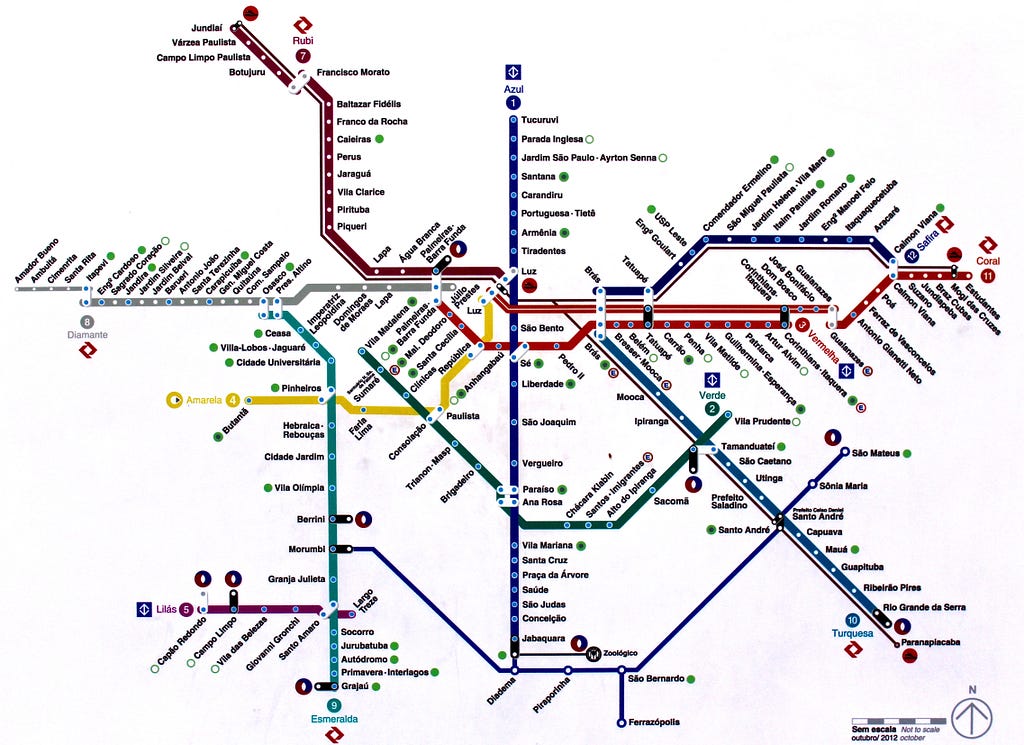

Somewhere in the depths of Netflix, there’s a team whose primary responsibility is to make sure the bits move quickly. As Netflix serves its customers by streaming video, they ensure that video data leaves the server in a prompt and efficient manner.
This team is all about the performance of the servers and the networks. They talk in terms of bandwidth, throughput, latency, reliability, and efficiency. They are comfortably deep in the weeds of how all the data moves.
The members of this team are performance engineers. They are architecting, engineering, and maintaining the performance of a very complex system. It occupies all their time and then some. In systems engineering, there are few jobs more technical than these.
And yet, at the very moment that a Netflix viewer’s video stream stops and that spinning animation appears, indicating the player is now awaiting more data, these engineers make a dramatic change. They become user experience designers.
They made decisions about the system. Those decisions affected the bandwidth, throughput, latency, and reliability. Those decisions had a dramatic affect on that viewer’s user experience. They didn’t think of themselves as UX designers, and I’m betting no one else in the organization did either, yet, here they are, affecting the UX in a dramatic way.
When someone influences the experience of the user, they, in that moment, become a user experience designer. Their influence may not be positive. Their knowledge of UX design principles may be small, even non-existent. Yet, because they affect the experience of the user, they are a designer, albeit an unofficial one.
Unofficial Designers Are Essential For Most Organizations
Design is hard to define. We know it when we see it. (We certainly know poor design when we experience it.) Yet, describing it has been elusive.
Years ago, I stumbled upon a definition I’ve become quite fond of:
Design is the rendering of intent.
A designer has an intention to change the world in some way. Maybe they intend to help people be more productive, more delighted, more comfortable, or better entertained. When they are designing, they are making their intention real in the world. They render their intent.
Netflix’s performance engineers have a strong intent. Their goal is to ensure the viewer’s watching experience is never interrupted because the network and servers can’t keep up with the video. Every decision they make is to render that intention in their viewer’s world.
Performance engineers aren’t the only folks whose decisions influence the experience of the users. When product managers decide on features or when database developers decide on the data model, they are making decisions that affect how the design will work. Make the right decision and the design will work well for the users. Make a different decision and the design may feel clumsy and frustrating.
While organizations may have a team of designated designers, that doesn’t prevent all these other people from making design decisions. Under the guise of maintaining control, some organizations make a concerted effort to wrestle the design decisions out of the hands of these unofficial designers.
Yet, for most organizations, there are too many decisions and there are too few official designers. They can’t make every decision about performance, functionality, or database modeling. In the end, the official designers need the unofficial designers to make good design decisions on their own.
The Convolution Of Reward Systems
What seems to frustrate the official designers most is when those unofficial designers are making poor design decisions. Because the unofficial designers don’t know the ways of good design — for example, they don’t necessarily know to put the user first — the odds they’ll make the right decisions are slim.
To make things worse, the cadre of unofficial designers are often rewarded for something other than making the user happy. They are rewarded for achieving business goals, such as shipping on time, reducing costs, or for providing a list of competitive advantages.
Those amiable goals can conflict with a great user experience. Sometimes it takes longer to develop a great user experience, because you have to spend the time researching and learning what the users need. It can cost more to do all that research and iteration, instead of building the first thing to come to mind. And more features often increase the complexity of the product, thus diminishing its value to the user and raising support costs.
These unofficial designers fall into the trap that every designer falls into: they fall in love with the idea they’ve come up with. A product manager may fall in love with their idea for a new feature, because it seems cool and shiny. Not because it solves any problems the users have.
Great designers don’t fall in love with their solutions.
Great designers fall in love with the users’ problems.
Usually, it’s not ego that drives them to falling in love with their ideas. It’s that they have little-to-no exposure to the problems the users have. Without exposure to users, they have no way of validating their idea. Without the data from any sort of validation, all that’s left is opinion. And there’s no way to sway an opinion in the absence of data.
The reward systems make this more convoluted. In many organizations, delivering features is rewarded more than solving customer problems. Product managers, like everyone else, naturally gravitate to what they’re rewarded for.
This means those people who set the organization’s reward systems are also influencing the design. They’ve rendered their intention on the organization, making decisions that affect the outcome of the design.
The only way we’ll get better decisions from the unofficial designers is to work to create a reward system that puts solving the customers’ problems first. And to do that, we need to bring the organization as a whole up to speed on what the customers’ problems are.
Experience Maps Help With Understanding The Problem
Since the earliest times, humankind has used maps to communicate. Maps show where we are and where we want to be. They communicate the relationships between the elements they contain.

In design, we map experiences. These maps take different forms. Customer journey maps show how our users progress through our design, often highlighting the frustrating moments alongside the delightful ones. Service blueprints describe how the organization interfaces with the customer, often revealing the invisible steps that happen for every action a customer takes. Empathy maps explore what our customers see, think, say, and feel, as they interact with our designs. And system relationship maps describe how the underlying parts of the system interact with each other to produce the users’ total experience.
It’s with maps like these that we explore the users’ problems with the unofficial designers and their reward-setting stakeholders. We can show where our customers are receiving less-than-intended quality, where our designs create frustration, and how those issues change the way people interact with our designs. We can show when customers call support (thus driving up costs), users avoid features (thus reducing value), or potential customers turn away (thus lowering sales).
Looking at someone else’s map can work. However, we’ve found a more effective approach is to have these unofficial designers and reward-setting stakeholders participate in making the maps themselves.
Map Making is Powerful
When we involve these essential influencers in the process of collecting the data and representing it on the map, they are more likely to “get it.” They see where the customer pain is coming from. They see how the decisions they’ve made have created the outcomes we’ve gotten.
It’s that act of putting pen to paper that is most powerful. To be the one who draws the point where users are frustrated makes them want to draw it elsewhere. And the way they draw it elsewhere is to change how they make decisions.
It’s simple, really. Many times we’ve seen tremendous change by just asking the highest paid stakeholder in the room to draw what we’ve learned from our research. They come away from that mapmaking experience with a strong motivation to change the map going forward.
For the first time, those unofficial designers and their reward-setting stakeholders are seeing how their decisions turn out. The stakeholders see how the rewards are pushing the organization in the wrong direction. Shared knowledge emerges and a common sense of the customers’ problems drives future thinking.
All because we gathered everyone together to make a simple map.
We’ve invited Jim Kalbach, author of the fantastic book Mapping Experiences, to teach a full-day workshop on creating different kinds of maps to engage stakeholders and unofficial designers. Join us at the UX Immersion: Interaction Conference on May 3 in Portland, where you’ll learn the techniques for effective experience mapping. See exactly what you’ll learn.

The Power of Experience Mapping was originally published in UX Immersion: Interactions on Medium, where people are continuing the conversation by highlighting and responding to this story.
from Stories by Jared M. Spool on Medium https://medium.com/ux-immersion-interactions/the-power-of-experience-mapping-212ba81e5ee?source=rss-b90ef6212176——2
